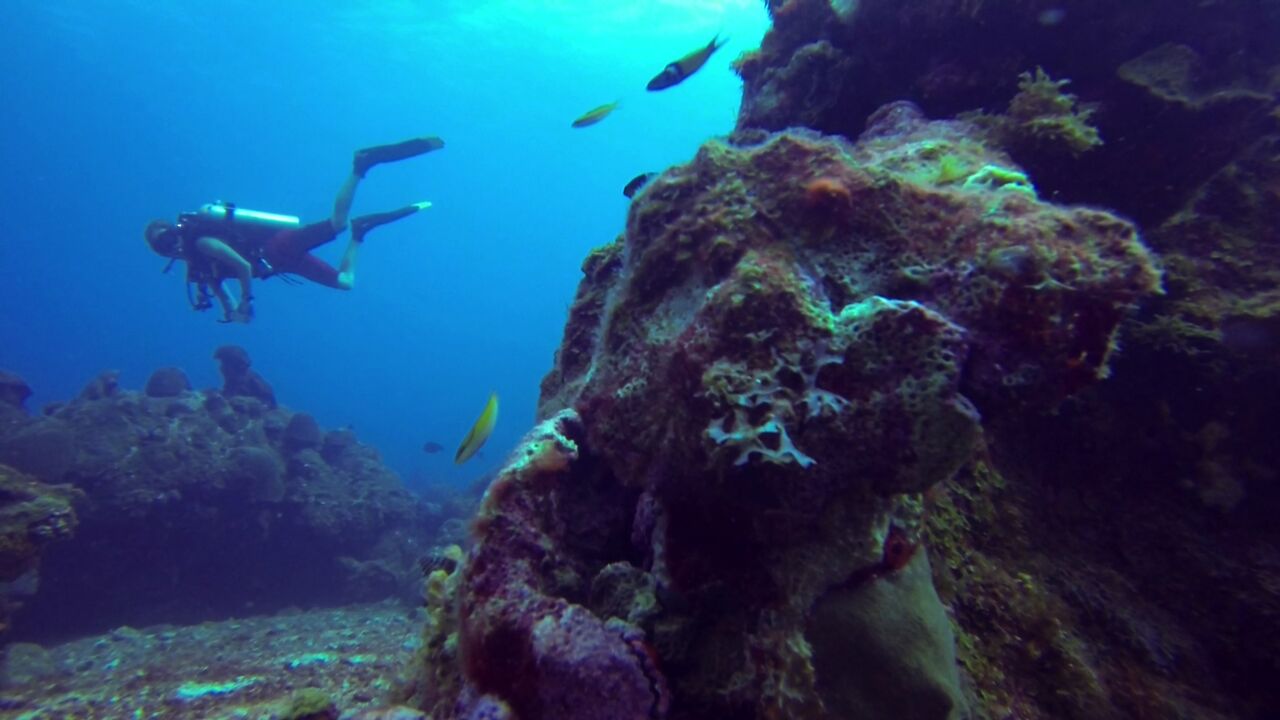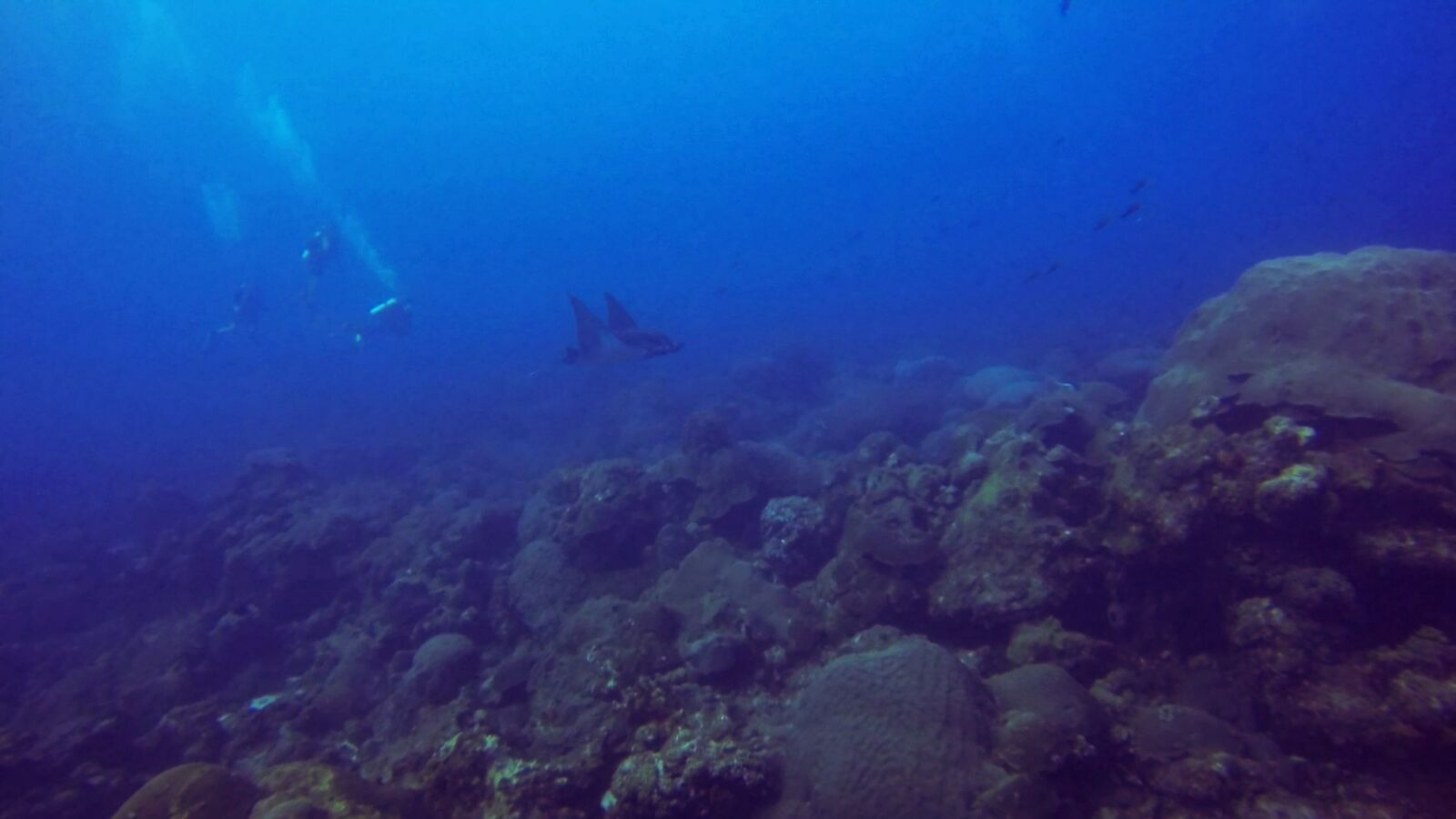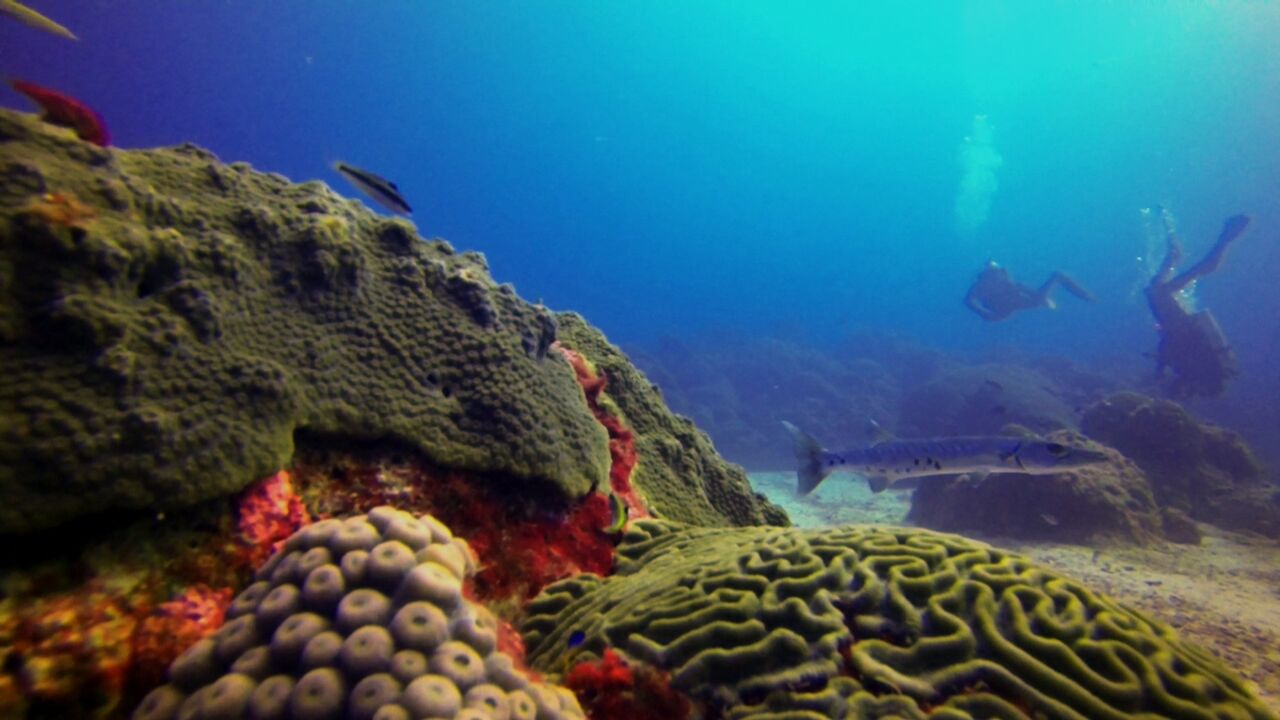Student View: 2015 Flower Gardens Coral Spawn Dive

Once someone experiences the Flower Gardens, there is no question as to why this site has been established as a National Marine Sanctuary. The coral coverage on the reef is impressive and the diversity of coral and sponges create a beautiful display, accented by colorful fishes and marine life. The opportunity to witness large animal life is also an appeal associated with the Flower Gardens. Scuba divers visit and hope to see whale sharks and manta rays and usually return from the Flower Gardens having seen one of the two species—I’ll let you guess which one.
The Harte Research Institute for Gulf of Mexico Studies (HRI) recognizes the uniqueness of the Flower Gardens and sponsors an annual expedition for students, staff, and special friends to visit this national treasure. HRI’s expedition to the Flower Gardens is timed to coincide with the annual coral spawning event that occurs 7-10 days after the full moon in August. Although I have been to the Flower Gardens several times before, each trip is a new experience for me. I am grateful for the opportunity to participate in this year’s coral spawn expedition and hope to continue to partake in the Flower Gardens cruise as long as I am associated with HRI. Each trip, I get more comfortable in the water, improve my videography skills, and am able to identify more species.
We travel out to the Flower Gardens on a charter boat called the Fling, which departs from Freeport, Texas in the evening and travels east overnight into the blue waters of the Gulf of Mexico. We arrive at the first dive site, approximately 100 miles offshore, early in the morning. The crew on the Fling hasn’t changed much over the years. John and his daughter Wendy keep us well fed, with food after every dive and dessert after every meal. JT and Matthew keep us safe by helping us in and out of the water and always making sure we are accounted for and in good health. Before each dive, JT goes down to lay out all of the lines, check the conditions, and entice us with rumors of what is below. Sometimes, he sees big sharks and mantas and other times, he speaks of little fish he has come to know as individuals. And, then there is Captain Bland, who is always there to make sure we stay on course and are entertained.
I love being at sea, even though it takes me a while to get used to the rocking and rolling of the boat. I always come back to shore with cuts and bruises and a stronger sense of self. There is so much to see, both above and below the surface. The stars are beautiful out in the middle of the Gulf, like no night sky I have seen on land. And, the view beneath the water is spectacular. I am always amazed at the amount of coral coverage at the Flower Gardens and the many types of beautifully colored sponges and algae add to its’ uniqueness. This trip, I became especially interested in different types of algae on the reef, like the Green Bubble Weed that looks like a little green blob.

We dove a total of 4 to 5 times per day over a period of 4 days. This amount of diving is exhausting, but worth the effort. The morning dives were my favorite dives of the trip this year. They are so peaceful. The sun is rising and the fish are moving slowly as they awake from their slumber. Usually, the current hasn’t picked up yet and it is especially easy to glide over the coral and observe fish as they start their days. On each of the morning dives, I had the pleasure of seeing a manta ray. Spending time in the water with a manta ray never gets old. They move through the water with such grace and as they glide past you, time seems to slow down.

Each dive is a different experience. On some dives, I hang out in sand patches and observe critters that live on the sea floor. The yellowhead jawfish are especially fun to watch as they dance above their burrows and eat food as it passes by. On other dives, I find myself captivated by schools of silvery fishes and how they respond to each other and environmental stimuli such as passing divers or fish. Sometimes, I try to move smoothly into the schools of fish and occasionally manage to become surrounded by their glittering bodies.
The night dives are in a league of their own. Diving into pitch black water is exciting and a bit spooky. As you descend, the bottom slowly comes into view. The species on the reef at night are different than the species you see during the day. Compared to their daytime counterparts, these species seem unfamiliar and more alien in nature. At night, you see many kinds of urchins, sea stars and sea cucumbers crawling around at a slow, almost eerie pace. At times, you feel movement around you, but by the time you shine your light in the direction of the movement, nothing is there. I find it especially fun to turn my light off and observe the bioluminescence around me. On my way back to the boat, I always take time to turn my light off, wave my hands around, kick my feet as hard as I can, and see how sparkly I can make the water become.

This year, I had an amazing coral spawning experience. Toward the end of our dive, my dive buddy and I stayed at one very large coral head for almost 10 minutes. We watched it release its eggs and stayed to watch other corals around it swell and start to release their eggs as well. As we made our way back toward the boat, the coral was spawning all around us. If only we had more air and could have stayed down for a bit longer. On the surface, the smell of fish was very strong and there was a large slick of eggs next to the boat. This experience is one of the most amazing experiences of my life, which is why it is hard for me to pass up a Coral Spawn Expedition.

